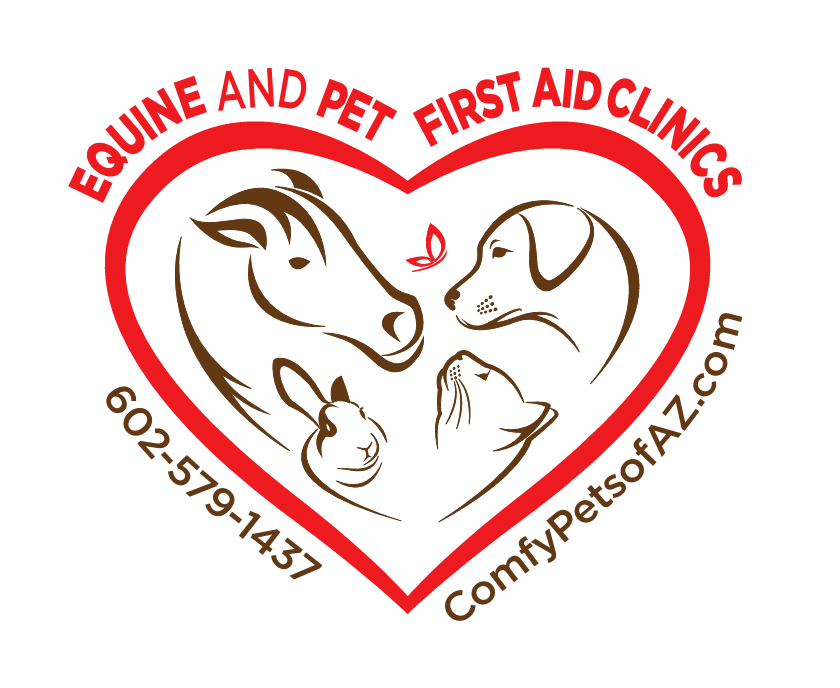How to stay safe on the trails for you & your K9
during the summer months
I experienced my first
118-degree summer day here in AZ, in 2006.
I walked out of the store and the intense heat slammed me in my chest,
where I could barely breathe. In the years
since I moved here, I’ve learned what it takes to survive in the desert hiking
during the summer months, with and without my dog. To further my education about the subject, in 2009 I became a
Certified Wilderness First Responder (WFR) and in 2011 I was certified as an
Emergency Animal Medical Technician I (EAMT I).
The biggest issue, for
humans as well as K9s, is Hyperthermia (elevated temperature) or otherwise
known as heat exhaustion or worse heat stroke.
The normal temperature for a K9 is 101-103 degrees. Dogs with a temperature above 103 are
experiencing heat exhaustion and above 106 is Heat Stroke. Dogs do not sweat. When you see your dog panting, think of it as their air
conditioner. When they are heavily
panting, however, they are extremely dehydrated and are experiencing heat
exhaustion.
The best way to prevent
heat exhaustion or heat stroke with your K9 is to start your hike/walk early in
the morning. Temperatures, here in AZ,
can be over 100 degrees between 8-9 a.m., so it’s important to be finished with
your hike/walk no later than 8 a.m.
Some people like to take their dogs late evening, but again temperatures
can still be 90-100 degrees by 9:00 p.m.
Always use caution when hiking/walking during the summer months (June
thru September).
The worst thing that can
happen to your dog is to go into full-blown heat stroke. Heat stroke is where the organs of the body
are literally cooking. Heat stroke is a
serious issue and can cause death of an animal or human.
How to stay safe on
the trails during the summer:
- Start early 4:00 a.m. – 6:00 am. Get off the trail no later than 8:00
a.m.
- Carry plenty of water for you and your K9. (Some dogs will not drink out of a
bottle, so bring a disposable bowl)
- Tell a family member or friend what trail you
will be hiking and when you should be expected to finish
- Emergency Blanket. You can purchase these at Wal-Mart or any sporting good
store. These can be use as shade
for your K9.
- Snacks for you and your K9. Salty snacks for you as you will need
to replace the salt that you have sweated out. Humans actually can suffer from Hyponatremia. This is a condition where someone
drinks more than enough water and fails to take in adequate salt (sodium),
the salt lost in sweat, the sodium level in the blood starts to drop. When blood sodium gets too low,
Hyponatremia develops.
- Electrolyte replacement drinks to help prevent
Hyponatremia as well as replacing your potassium, calcium and magnesium
- Map/Compass for a trail you are not familiar
with
- Cell phone (you may not get a signal at one
spot, but you may get one at a higher elevation) and any other personal
items
- Sun protection (hat and sunglasses)
- First-Aid Supplies (small baggie will do). Don’t forget miniature pliers for
removing cactus thorns
Signs & Symptoms of Heat Exhaustion / Heat Stroke:
- Temperature 103.5-105.8 (Heat Exhaustion)
- Temperature 106+ (Heat Stroke)
- Heavy Panting
- Collapse
- Bloody diarrhea or vomit (V/D)
- Increased Heart Rate (HR)
- Increased Respiratory Rate (RR)
- Increased redness on the Mucous Membranes (MM)
- Capitulary Refill Time (CRT) < 1 sec
- Salivation
- Depressed
- Seizures / Unconsciousness / Coma
Treatment:
- Remove animal out of direct heat (using an
emergency blanket as shade)
- Check ABC’s (Airway / Breathing / Circulation)
- Take rectal temperature, if you’re able
- Cool slowly with wet towels, drape animal if
using hose at water source – let run a few seconds to cool water (you can
use your t-shirt; hat; scarf, etc., if you do not carrying a towel with
you
- Place soaked item(s) on head, neck, feet,
chest and abdomen
- Fan
- Monitor Temperature
- Evac or transport immediately
The goal is to decrease
body temperature to 103 in 10-15 minutes (slowly). Never, ever put dog in ice because you will then have a new
problem/issue—hypothermia.
I am an enthusiastic
outdoor person. I love to hike, rock
climb, mountaineer and just basically anything to do with being one with
nature. I have learned over the years
for what works best with me, so basically it’s trial and error. I am a hiking guide and have dealt with
hikers that have found themselves in distress.
Be safe and careful on the trails during the summer months. There have been plenty of deaths here in AZ
during the intense summer months, including very early in the morning. I could tell you one horror story after
another. The main thing is to use your
common sense. If the ground is too hot
for you, then it’s too hot for your K9 (pads can burn very easily during the
hot months). Some people like to use
booties on their dogs. They take awhile
for a dog to get used to them, and some dogs will have nothing to do with
them--again, trial and error.

